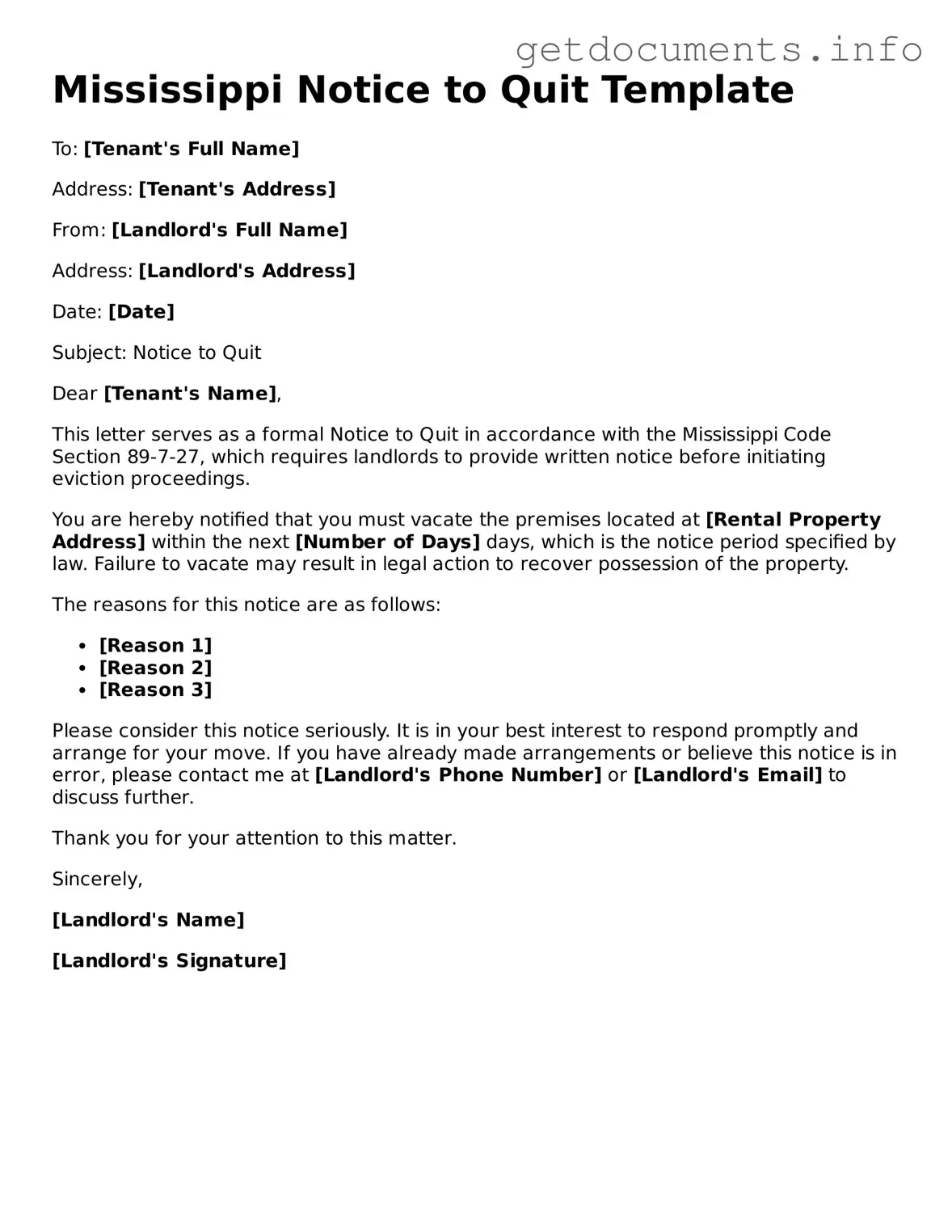Free Notice to Quit Template for Mississippi
The Mississippi Notice to Quit form is a legal document used by landlords to formally request that tenants vacate a rental property. This form serves as a crucial step in the eviction process, providing tenants with a clear indication of the landlord's intent. For those needing to fill out this form, click the button below to get started.
Access Notice to Quit Editor
